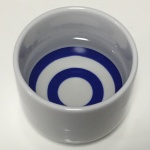I was able to purchase the unfiltered sake “Gekkou” from Koueigiku Sake Brewery Co., Ltd.
This sake is very popular, making it hard to come by, but it was very delicious with a unique sweet and sour acidity that I have never encountered before.
Although it is a bit pricey, if the opportunity arises, I would definitely like to purchase this sake again.
Koueigiku Sake Brewery Co., Ltd.

First, as basic information about Koueigiku ‘Tsukigami’, we will organize information about the brewery and alcohol content, among others.
About Koueigiku Sake Brewery, the brewery of Koueigiku.
Information about Koueigiku Sake Brewery, the brewer of Koueigiku ‘Gekko’.
| Brewery name | Koueigiku Sake Brewery Co., Ltd. |
| Location | Ogi City, Saga Prefecture, Japan |
| Founded year | 2,018 |
| Main product | Koueigiku |
Koueigiku Sake Brewery, located in Ogi City, Saga Prefecture, was founded using the site of the now-defunct Koueigiku Sake Brewery, which closed in 2008. The brewery obtained a brewing license in 2018 (Reiwa 1st year)
In addition, the building, including the Koueigiku brewery, has been designated as a Registered Tangible Cultural Property (building) by the Japanese government, indicating its high historical value.
Tangible cultural properties
The “Tangible Cultural Properties” refer to tangible cultural assets such as buildings, crafts, sculptures, calligraphy, books, ancient documents, archaeological materials, historical materials, and others that are considered historically, artistically, and academically valuable for our country. Details are listed in the guidelines provided by Japan’s Agency for Cultural Affairs.
Basic information (numerical evaluation) for “Gekkou” by Kouei Kikusake Brewery
I am organizing the numerical evaluations of “Gekkou” from labels, official Instagram, and other sources.
| Types of sake | Unfiltered unpasteurized sake (Muroka Nama Genshu) |
| Rice polishing ratio | Non-disclosure |
| Raw rice | 100% Hattannishiki |
| Alcohol degree | 13% |
his sake is brewed using naturally occurring lactic acid bacteria. The term “naturally occurring lactic acid bacteria” refers to a brewing process that is similar to the commonly known method of producing unpasteurized sake, which is unique to this brewery.
Features and impressions (evaluation/review) of Koeigiku’s “Gekkou” sake

According to the official Instagram account, it is said that the Koeikiku series of sake “exhibits its true character more after being opened than immediately after opening.” Therefore, it is recommended to drink it over a period of several days rather than consuming it all at once.
The color and aroma characteristics of Koeigiku’s “Gekkou” sake are…

The color of the sake is almost transparent, as shown in the photo.
The aroma is reminiscent of fruit, similar to the scent of a “pear” (although it is generally described as “green apple”).
The aroma becomes stronger after the sake has been opened and allowed to sit for some time.”
The taste characteristics of Koeigiku’s “Gekkou” sake are…
I drank it chilled in the refrigerator as it is a “nama” (unpasteurized) sake.
At first, I honestly felt that the acidity was too strong and it was difficult to drink.
However, as I drank it little by little in five servings, I don’t know if I got used to it or if it changed, but the acidity became milder and it eventually became one of my favorite sake.
To describe it, it has a refreshing acidity similar to that of a lactic acid drink.
Summary

Thank you for reading to the end.
At first, I found Koeikiku’s “Gekkou” sake too acidic and difficult to drink, but as I had it in multiple servings, I ended up liking its acidity and found it to be a good sake. If I have the chance, I would like to purchase it again.

